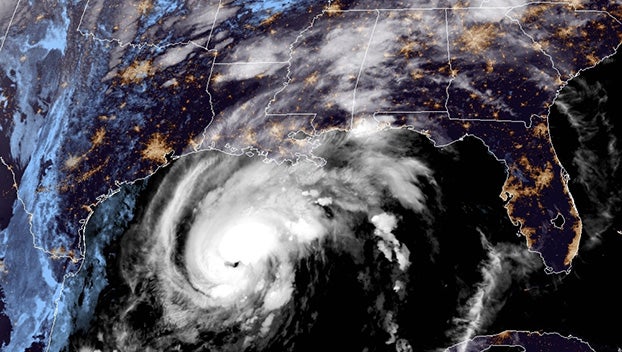Zeta re-strengthens to a hurricane, takes aim at Gulf Coast
Published 6:36 am Wednesday, October 28, 2020
Zeta re-strengthened into a hurricane early Wednesday as Louisiana braced for the 27th named storm of a historically busy Atlantic hurricane season.
Landfall is expected south of New Orleans, with life-threatening storm surge and strong winds along portions of the northern Gulf Coast beginning around midday.
Zeta raked across the Yucatan Peninsula Tuesday, striking as a hurricane, before weakening to a tropical storm.
Hurricane warnings stretched from Morgan City, Louisiana, along the Mississippi coast to the Alabama state line. The tropical storm warning along the Florida panhandle has been extended eastward to the Walton/Bay County Line. Early Wednesday, the storm had sustained winds of 85 mph (136 kph) and was centered 320 miles (514 kilometers) south-southwest of the Mississippi River’s mouth.
The center of Zeta will approach the northern Gulf coast Wednesday and should make landfall in southeastern Louisiana in the afternoon, according the National Hurricane Center. Zeta will move over Mississippi Wednesday evening, and then cross the southeastern and eastern United States on Thursday.
Louisiana Gov. John Bel Edwards asked President Donald Trump for a disaster declaration ahead of the storm. He and Alabama Gov. Kay Ivey both declared emergencies, as did Mayor Andrew “FoFo” Gilich in Biloxi, Mississippi. Trump declared an emergency for Louisiana Tuesday evening.
“There’s no doubt that we’ve seen a lot this year, with COVID and so many threats from so many storms,” Gilich said in a news release, “but this storm shows that we haven’t seen it all yet.”
As Zeta approached, New Orleans officials announced that a turbine that generates power to the city’s aging drainage pump system broke down Sunday, with no quick repair in sight. There was enough power to keep the pumps operating if needed, but little excess power to tap if other turbines fail, officials said at a news conference with Mayor LaToya Cantrell.
Officials said they were running through contingencies to provide power and make repairs where needed should there be other equipment problems. Forecasts called for anywhere from 2 to 6 inches (5 to 15 centimeters) of rain to fall in the New Orleans area, but Zeta is expected to be a relatively fast-moving storm, possibly mitigating the flood threat.
Zeta broke the previous record for a 27th named Atlantic storm, taking shape more than a month before that one on Nov. 29, 2005. It’s also this season’s 11th hurricane. An average season sees six hurricanes and 12 named storms.
The extraordinarily busy hurricane season has focused attention on the role of climate change, which scientists say is causing wetter, stronger and more destructive storms.
Louisiana has been hit by two tropical storms and two hurricanes: Laura, blamed for at least 27 Louisiana deaths after it struck in August, and Delta, which exacerbated Laura’s damage in the same area just weeks later. New Orleans has been in the warning area for potential tropical cyclones seven times this year, each one veering to the east or west.
“I don’t think we’re going to be as lucky with this one,” city emergency director Colin Arnold said.
With yet another storm approaching, worries accumulated for people left homeless. The state is sheltering about 3,600 evacuees from Laura and Delta, most in New Orleans area hotels.
“I’m physically and mentally tired,” a distraught Yolanda Lockett of Lake Charles said, standing outside a New Orleans hotel.
Meanwhile, many along the coast renewed an unwanted ritual of preparation.
On Dauphin Island, off the Alabama coast, workers at Dauphin Island Marina prepared for Zeta, although in some places there was little left to protect after Hurricane Sally hit in September.
“We don’t have any docks or fuel pumps at this point. Sally took it all out,” employee Jess Dwaileebe said.
In Louisiana’s coastal St. Bernard Parish, east of New Orleans, Robert Campo readied his marina for another onslaught. “We’re down for four or five days, that’s four or five days nobody’s fishing. That’s four or five days nobody is shrimping. That’s four or five days, no economic wheels are turning,” he said.
“I’ve never seen anything like it,” said Thomas Hymel, an extension agent in Jeanerette with the LSU Agricultural Center. He said the storms have meant more than a month of down time for seafood harvesters, many of whom are already suffering a drop in demand from restaurants due to the coronavirus pandemic.





